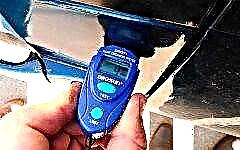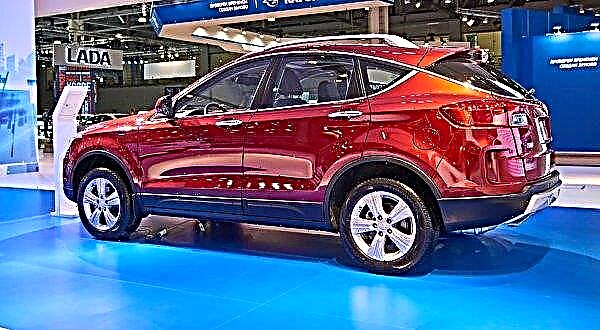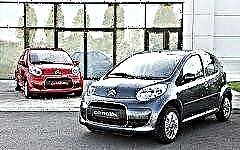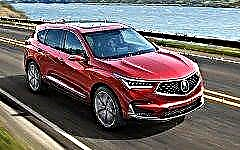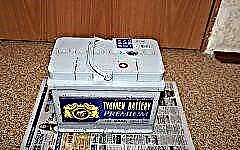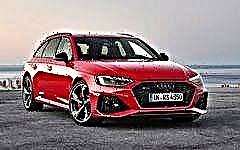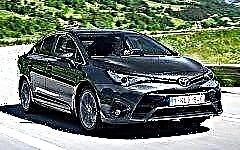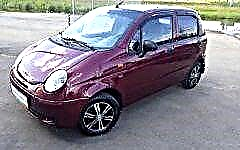

The content of the article:
- Used Cars: Top Ten Worst
The choice of a car is a responsible occupation; this issue must be approached with special care. It is important to check not only the condition of the car, documents, the presence of fines, but also to choose the right model itself.
The review will present a list of the worst used cars in Russia. Naturally, these cars can also be driven - not everyone has enough budget for more expensive models, but it is worth familiarizing yourself with this information.
Used Cars: Top Ten Worst
Daewoo matiz

This is perhaps one of the most popular products of the South Korean company, released in the 1990s. There is enough space in the car for four adults, while visually it is small enough, and parking does not require a lot of space in the garage or on the street.
The Matiz is a model that has defied class opposition in Europe, but the quality of materials and workmanship leaves a lot to be desired.
The power plant installed by Daewoo engineers is tiny - its volume is 800 cubic centimeters. At one time, the three-cylinder engine was considered a breakthrough of the company, its power is 50 hp. with.
The company also rightly noted that cars of this type are not usually used to travel long distances.
Nevertheless, Daewoo Matiz can be regarded as a good model for a novice driver, given the low cost of the car itself and its maintenance. The ridiculous size does not affect the handling in any way - it is quite comfortable to drive behind the wheel.
In recent years, the quality of the model has become worse, so it is better to take a closer look at the copies of an earlier release year.
Lifan smily

Modern cars are not like the old ones, but for an adequate price you will get: alloy wheels, power windows for front and rear windows, ABS, power steering and air conditioning. "Full minced meat" - you will not find such options in any old domestic model.
On the road, the car shows itself well, while the interior is ascetic - there is nothing superfluous, but everything you need is at hand.
Fuel consumption in the city will not exceed 8 liters, and on the highway will be reduced to 5 liters per 100 kilometers. The suspension is stiff, but copes with the unevenness of our roads.
The dimensions of Lifan Smily are small, but you can bring food packages or a couple of suitcases.
Cons: terrible build quality, which is offset by the low price. Many car owners have problems with antifreeze (it ends very quickly).
Lifan solano

"Chinese car" - sounds like a verdict, but the understanding immediately comes that the purchase will not require a lot of money, as well as low maintenance costs.
Let's start with the cons: when driving at speeds over 100 km / h, many people hear noise on the left side... You can get rid of it by installing visor.
The rubber seals in the undercarriage are tanned in the cold and can cause a dull knock that disappears when it gets warmer outside. The engine is weak, at low temperatures oil may ooze from the filter, after warming up, the leak stops.
In general, for a car for every day, this is not the worst option. The owners are satisfied with the package bundle and running characteristics, you can turn a blind eye to minor drawbacks at such a cost.
Peugeot Partner

It may not be the most attractive or refined MPV, but the Peugeot Partner has positive aspects that make it in demand.
This car is a good choice for families and constant use. The back row of seats can easily accommodate three people of average build, the trunk is also roomy.
For long-distance travel, cruise control comes in handy. Peugeot Partner has done a lot for the driver's comfort: good sound insulation, which many are still improving, smooth running. The interior is simple, but ergonomic and straightforward.
Citroen DS4

The Citroen DS4 is a small premium hatchback based on the Citroen C4. The DS 4's mission is to compete with premium hatchbacks including the BMW 1 Series, Mercedes A-Class and Audi A3.
Since this car has to compete with premium models and is more expensive than the C4, it is better equipped. Elegance trim includes ambient lighting, panoramic windscreen, 17-inch alloy wheels and rear parking sensors.
Great wall hover h6

Low fuel consumption, four-wheel drive, good looks, roomy trunk and interior, cheap parts that can always be found - all this applies to the Great Wall Hover H6.
The car moves confidently along the highway, but when driving on bumps, it is somewhat harsh. The included climate control significantly reduces the dynamics of the car, and you will not be able to accelerate quickly.
When changing the fine filter of the fuel system, problems may arise due to the inconvenient location.
Daewoo nexia

The Daewoo Nexia model was produced from 1994 to 2015. In total, one generation of the model and one restyled model was presented. Car production was established in South Korea.
Also, these cars were assembled at Daewoo subsidiaries in Poland, Russia, Ukraine, Egypt, Romania, Vietnam and Uzbekistan.
The history of the Daewoo Nexia model begins in 1986, when the Korean manufacturer began producing the Daewoo Racer model, developed on the basis of the Opel Kadett E. In 1994, this car was restyled and renamed Daewoo Nexia.
The presentation of the model took place at the Beijing Motor Show. The car had a stylish and solid design. Smooth body lines, narrow headlights and a small chrome grille looked modern and elegant.
The original wheel arches make the exterior unique. The interior was simple and functional, yet not devoid of elegance. Comfortable seats with head restraints provided good lateral support.
The center console was facing the driver. The dashboard is located vertically. Due to the special protective visor, the indicators of the devices were well readable even in sunny weather.
Various modifications of Daewoo Nexia cars were equipped with air conditioning, power windows, power steering, tachometer, radio with four speakers, digital clock.
Fog lights, tinted windows, steering wheel height adjustment, driver airbag, central locking, alarm, leather interior trim were offered as additional options.
Initially, the car was produced in the sedan body. In 1995, three- and five-door hatchbacks went on sale.
The first generation of Daewoo Nexia cars was produced in South Korea until 1997. Poland produced this model until 1998, Vietnam until 2002, Romania until 2006, Egypt until 2008.
After the termination of production in these countries, the UzDaewoo enterprise in Uzbekistan became the only place where the Daewoo Nexia model is still produced.
In general, the car is not bad, but you need to carefully inspect it before buying and check it, paying special attention to the place of assembly.
Daewoo gentra

The name "Gentra" was used on two different vehicles - a subcompact model produced in South Korea between 2005 and 2011, and a compact car offered in Uzbekistan since 2013. The Uzbek car was renamed Ravon Gentra in 2015.
The Daewoo Gentra is a subcompact car originally produced by South Korean GM Daewoo from 2005 to 2011.
The Daewoo Gentra made in Uzbekistan are equipped with a 1.5-liter 107 hp engine. (80 kW) in combination with a five-speed manual or six-speed automatic transmission.
Models made in Uzbekistan lacked power, the owners complained about poor-quality paintwork and a lack of space in the rear seats, a long warm-up of the engine in subzero temperatures.
Peugeot 301

The designs of French cars are often polarized: either they really like motorists, or they only cause negative emotions.
Their mechanics are somewhat different from the Japanese cars we are used to, especially with regard to the gearbox. It is this approach of the French that repels buyers, because the car should not only serve faithfully to the owner, but also be as convenient as possible in terms of repair.
True lovers of the French automotive industry will benefit from poor sound insulation, high cost of spare parts and the specific operation of the gearbox.
Sedan "C" class Peugeot 301 was released in 2012. In Russia, you can buy a clone of this car called Citro? N C-Elysee.
The car may lose dynamics, periodic twitching appears - this problem is solved by replacing the fuel filter, which is advisable to change after 30,000 kilometers. The chassis will transmit all the irregularities of the road, six gears are not enough on the track.
Nissan tiida

In the early 2000s, Nissan found itself at a crossroads. In the late 90s, bankruptcy was avoided and it was possible to merge with Renault for the further development and production of engines and chassis. The Nissan lineup did not really stand out, and one of the new models was the Nissan Tiida.
The Tiida is actually based on the old Renault-Nissan B platform. It came with a 1.6-liter petrol or 1.5-liter diesel engine and a six-speed manual or four-speed automatic transmission.
This model, despite the problems with the steering rack, small trunk, stiff suspension and high gas mileage in the city, is actively used.
Almost all Tiida are equipped with climate-controlled air conditioning, which will maintain the desired temperature in the cabin, which is an absolute plus for an entry-level car.
The Tiida's seat is taller than other small hatchbacks, making it relatively easy to get in and out - a plus for seniors.
The 2004-2012 Tiida requires service every 12 months or 15,000 kilometers.
On paper, the Tiida looked powerful and functional enough for its price segment, but owners often couldn't hide their frustration.

